Last week, the Government announced an increase in grant aid for businesses towards the cost of installing solar panels. The enhanced grant aid rates fall under the existing Non-Domestic Microgeneration Scheme, which is administered by the Sustainable Energy Authority of Ireland (SEAI).
Farmers already have access to a 60% grant under TAMS III for solar PV systems that generate electricity for their farms and farmhouses. However, this grant is limited to self-consumption with minimal scope for exporting electricity. If a farmer intended to install a solar PV system for the purpose of exporting electricity and getting paid, the only real support available was a €2,400 grant towards a maximum of 6kWp (peak output of a solar system in kilowatts) through the SEAI.
However, this is about to change. The enhanced Non-Domestic Microgeneration Scheme will introduce a range of new tiered grant supports for solar PV systems, with capacities ranging from 6kWp to 1,000 kWp (1MW). This means farmers, businesses, public buildings, sports clubs and community organisations will be eligible for grant aid to install solar panels for both self-consumption and export.
The updated scheme will be in operation until the end of 2023 as a trial. After that, it will be reviewed and included in regular budgets for 2024-25.
Rates
The SEAI will make the changes and start accepting applications based on the new scheme guidelines in mid-July. The updated grants will be as follows:
Up to 6kWp will remain unchanged up to €2,400, with an additional:
€300/kWp for each extra kWp installed between 7kWp and 20kWp.€200/kWp for each extra kWp installed between 21kWp and 200kWp.€150/kWp for each extra kWp installed between 201kWp and 1,000kWp.This would mean that installations up to 1MW could be eligible for a grant of up to €162,600.
Farmers who want to meet their farms’ electricity needs through solar PV will find it difficult to find a better scheme than TAMS III. However, for those considering investing in a solar system, whether rooftop or ground-mounted, with the primary aim of exporting electricity to the grid and earning income, the enhanced Non-Domestic Microgeneration Scheme needs to be considered.
The grant aid provided by this scheme typically covers 20% to 30% of the investment cost of a system.
Tables 1 to 4 outlines the value of these schemes relative to the cost and returns to on-farm solar investments. In these examples, we assume that all electricity is exported to the grid without any battery storage.
The assumed electricity price is €0.25/kWh, but take this figure with a pinch of salt. The calculations also factor in Accelerated Capital Allowance (ACA).
In this case, the farmer is registered as a company and can write off 12.5% of the investment cost after grant aid in the first year through ACA.
The calculations also don’t factor in the cost of debt, if required.
For smaller systems ranging from 6kWp to 20kWp (as shown in Tables 1 and 2), this price and higher is achievable through one-year microgeneration deals offered by electricity suppliers.
Since the investment amount is relatively small (in comparison to larger systems), many farmers can take the risk of having only one-year price certainty.
After the year is over, they can aim to lock into another microgeneration agreement.
However, for investments above 20kWp, particularly from 200kWp to 1MW (as outlined in Tables 3 and 4), it is likely that some form of power purchase agreement (PPA) may need to be secured if financing is required for the investment.
While many PPA prices are higher than €0.25/kWh, there are several agreements, including State-backed Renewable Energy Support Scheme (RESS), where prices fall well below this.
The micro-generation sector urged Minister Ryan to mandate smart meter installation within three months of solar PV system installation
Larger ground-mounted systems will also need to navigate the planning system, obtaining planning permission and ensuring they can secure an adequate grid connection, which will lead to higher costs.
Based on the examples provided in the tables, these investments are worthwhile but require a stable price over the three- to five-year payback period.
The scheme was widely welcomed in the industry. Chair of the Micro Renewable Energy Federation Pat Smith, who assisted with the above figures, commended the new solar PV grant scheme but emphasised the need to address any remaining delays and obstacles in the electricity distribution system.
This includes fast grid access agreements from ESB Networks and fair payments for surplus energy generated by businesses, farms and homes, he said.
Smith also called for the prioritisation of smart meter installations in any business, farm, or home with a solar PV system as accurate measurement and payment for exported energy are vital. The micro-generation sector urged Minister Ryan to mandate smart meter installation within three months of solar PV system installation.
IFA’s national environment chair Paul O’Brien has welcomed the move by the Government but pointed out that for this to work, a whole of Government approach is needed.
“IFA has called for dedicated renewable budgets and the removal of remaining barriers to adoption. These include easy and quick access to the national grid; a dedicated renewables budget for farmers; and a major awareness campaign by the Government and its agencies to promote the benefits of solar and other renewable technologies,” he said.
The Irish Solar Energy Association CEO Conall Bolger said that while rooftop solar panels have gained popularity among Irish homes, businesses have lacked comparable support until now.
Bolger further highlighted the potential impact of businesses adopting solar energy.
With larger premises and roofs, businesses can generate substantial amounts of power, making a significant contribution to Ireland’s renewable electricity targets, he said.
Note: Details of the long-awaited Small Scale Generation Scheme, aimed at incentivising investments in renewable electricity technology, are set to be announced later this year.
Last week, the Government announced an increase in grant aid for businesses towards the cost of installing solar panels. The enhanced grant aid rates fall under the existing Non-Domestic Microgeneration Scheme, which is administered by the Sustainable Energy Authority of Ireland (SEAI).
Farmers already have access to a 60% grant under TAMS III for solar PV systems that generate electricity for their farms and farmhouses. However, this grant is limited to self-consumption with minimal scope for exporting electricity. If a farmer intended to install a solar PV system for the purpose of exporting electricity and getting paid, the only real support available was a €2,400 grant towards a maximum of 6kWp (peak output of a solar system in kilowatts) through the SEAI.
However, this is about to change. The enhanced Non-Domestic Microgeneration Scheme will introduce a range of new tiered grant supports for solar PV systems, with capacities ranging from 6kWp to 1,000 kWp (1MW). This means farmers, businesses, public buildings, sports clubs and community organisations will be eligible for grant aid to install solar panels for both self-consumption and export.
The updated scheme will be in operation until the end of 2023 as a trial. After that, it will be reviewed and included in regular budgets for 2024-25.
Rates
The SEAI will make the changes and start accepting applications based on the new scheme guidelines in mid-July. The updated grants will be as follows:
Up to 6kWp will remain unchanged up to €2,400, with an additional:
€300/kWp for each extra kWp installed between 7kWp and 20kWp.€200/kWp for each extra kWp installed between 21kWp and 200kWp.€150/kWp for each extra kWp installed between 201kWp and 1,000kWp.This would mean that installations up to 1MW could be eligible for a grant of up to €162,600.
Farmers who want to meet their farms’ electricity needs through solar PV will find it difficult to find a better scheme than TAMS III. However, for those considering investing in a solar system, whether rooftop or ground-mounted, with the primary aim of exporting electricity to the grid and earning income, the enhanced Non-Domestic Microgeneration Scheme needs to be considered.
The grant aid provided by this scheme typically covers 20% to 30% of the investment cost of a system.
Tables 1 to 4 outlines the value of these schemes relative to the cost and returns to on-farm solar investments. In these examples, we assume that all electricity is exported to the grid without any battery storage.
The assumed electricity price is €0.25/kWh, but take this figure with a pinch of salt. The calculations also factor in Accelerated Capital Allowance (ACA).
In this case, the farmer is registered as a company and can write off 12.5% of the investment cost after grant aid in the first year through ACA.
The calculations also don’t factor in the cost of debt, if required.
For smaller systems ranging from 6kWp to 20kWp (as shown in Tables 1 and 2), this price and higher is achievable through one-year microgeneration deals offered by electricity suppliers.
Since the investment amount is relatively small (in comparison to larger systems), many farmers can take the risk of having only one-year price certainty.
After the year is over, they can aim to lock into another microgeneration agreement.
However, for investments above 20kWp, particularly from 200kWp to 1MW (as outlined in Tables 3 and 4), it is likely that some form of power purchase agreement (PPA) may need to be secured if financing is required for the investment.
While many PPA prices are higher than €0.25/kWh, there are several agreements, including State-backed Renewable Energy Support Scheme (RESS), where prices fall well below this.
The micro-generation sector urged Minister Ryan to mandate smart meter installation within three months of solar PV system installation
Larger ground-mounted systems will also need to navigate the planning system, obtaining planning permission and ensuring they can secure an adequate grid connection, which will lead to higher costs.
Based on the examples provided in the tables, these investments are worthwhile but require a stable price over the three- to five-year payback period.
The scheme was widely welcomed in the industry. Chair of the Micro Renewable Energy Federation Pat Smith, who assisted with the above figures, commended the new solar PV grant scheme but emphasised the need to address any remaining delays and obstacles in the electricity distribution system.
This includes fast grid access agreements from ESB Networks and fair payments for surplus energy generated by businesses, farms and homes, he said.
Smith also called for the prioritisation of smart meter installations in any business, farm, or home with a solar PV system as accurate measurement and payment for exported energy are vital. The micro-generation sector urged Minister Ryan to mandate smart meter installation within three months of solar PV system installation.
IFA’s national environment chair Paul O’Brien has welcomed the move by the Government but pointed out that for this to work, a whole of Government approach is needed.
“IFA has called for dedicated renewable budgets and the removal of remaining barriers to adoption. These include easy and quick access to the national grid; a dedicated renewables budget for farmers; and a major awareness campaign by the Government and its agencies to promote the benefits of solar and other renewable technologies,” he said.
The Irish Solar Energy Association CEO Conall Bolger said that while rooftop solar panels have gained popularity among Irish homes, businesses have lacked comparable support until now.
Bolger further highlighted the potential impact of businesses adopting solar energy.
With larger premises and roofs, businesses can generate substantial amounts of power, making a significant contribution to Ireland’s renewable electricity targets, he said.
Note: Details of the long-awaited Small Scale Generation Scheme, aimed at incentivising investments in renewable electricity technology, are set to be announced later this year. 


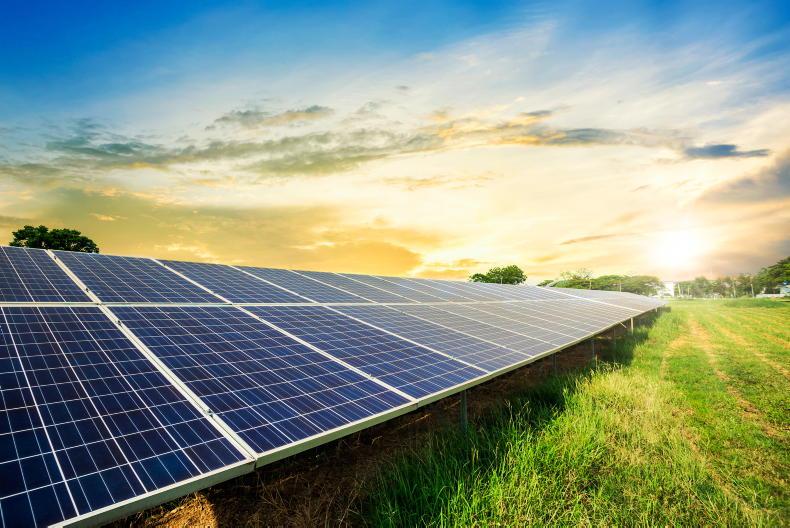

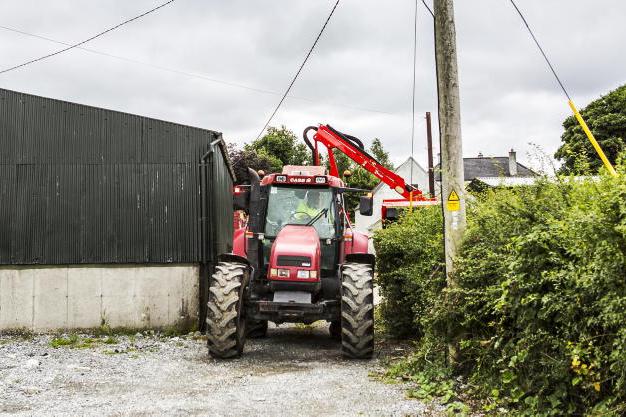
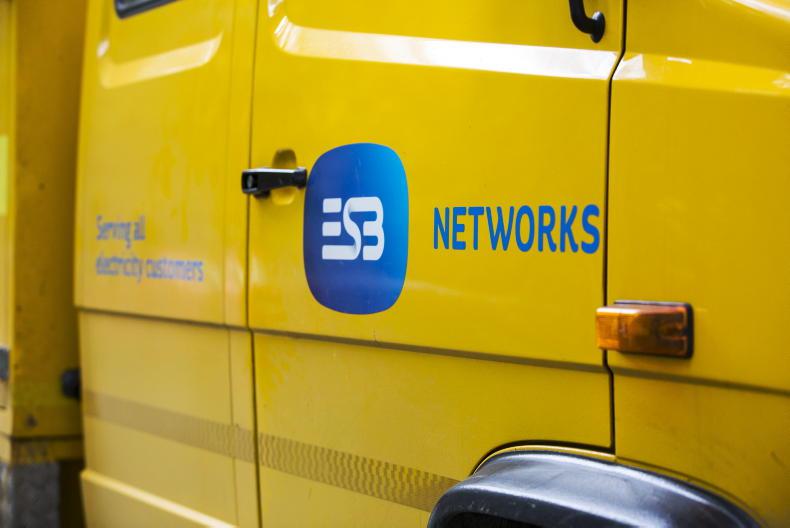
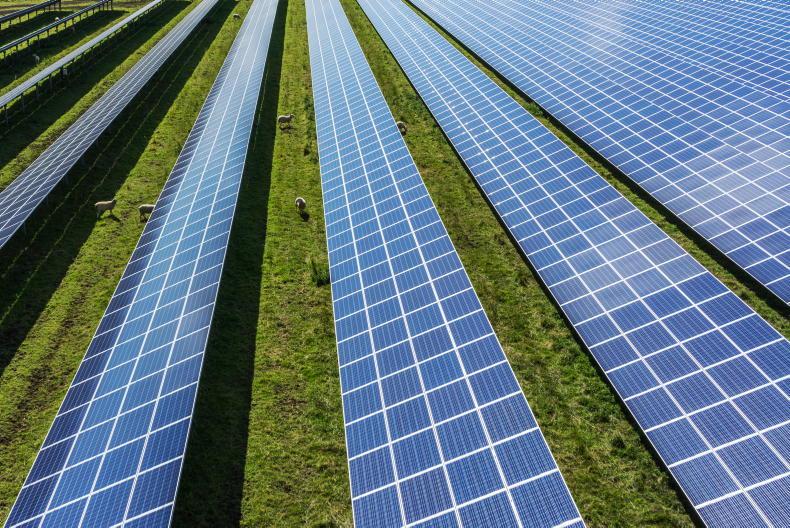
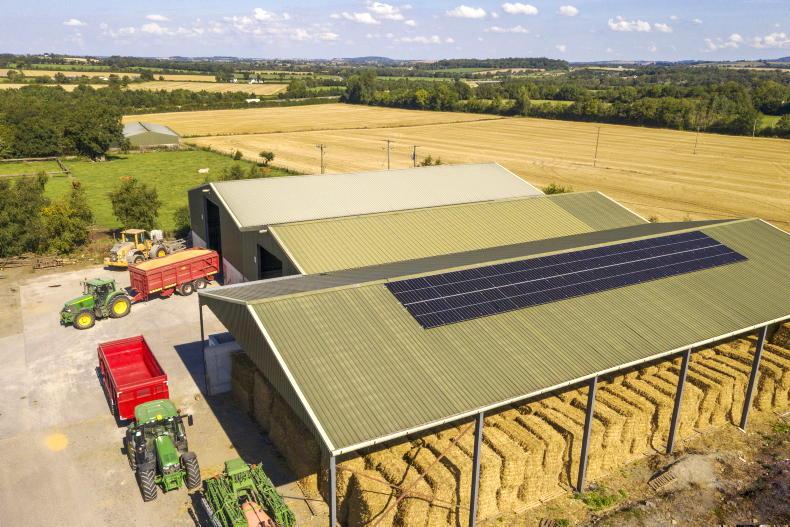
SHARING OPTIONS